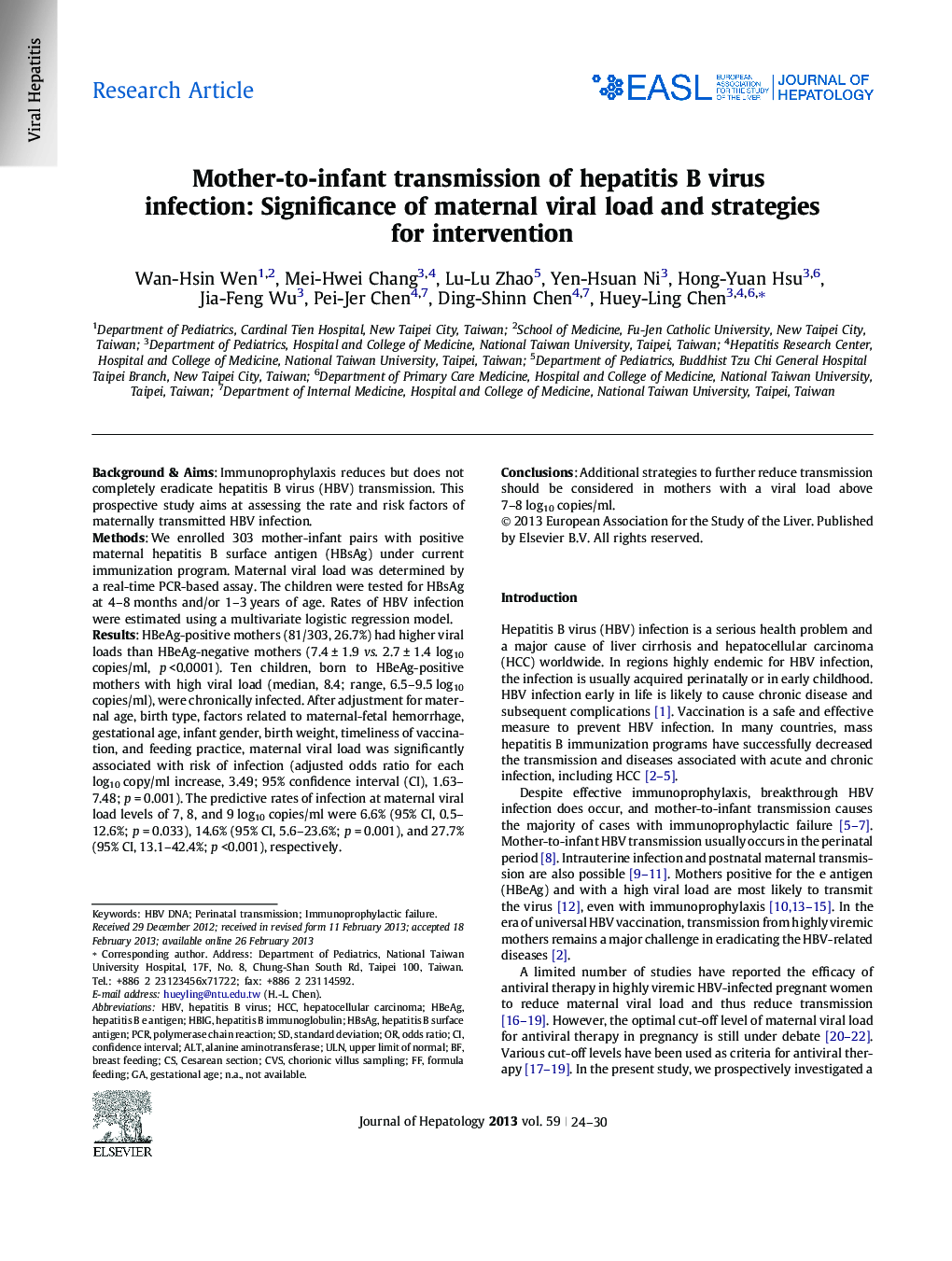| Article ID | Journal | Published Year | Pages | File Type |
|---|---|---|---|---|
| 6104709 | Journal of Hepatology | 2013 | 7 Pages |
Background & AimsImmunoprophylaxis reduces but does not completely eradicate hepatitis B virus (HBV) transmission. This prospective study aims at assessing the rate and risk factors of maternally transmitted HBV infection.MethodsWe enrolled 303 mother-infant pairs with positive maternal hepatitis B surface antigen (HBsAg) under current immunization program. Maternal viral load was determined by a real-time PCR-based assay. The children were tested for HBsAg at 4-8 months and/or 1-3 years of age. Rates of HBV infection were estimated using a multivariate logistic regression model.ResultsHBeAg-positive mothers (81/303, 26.7%) had higher viral loads than HBeAg-negative mothers (7.4 ± 1.9 vs. 2.7 ± 1.4 log10 copies/ml, p <0.0001). Ten children, born to HBeAg-positive mothers with high viral load (median, 8.4; range, 6.5-9.5 log10 copies/ml), were chronically infected. After adjustment for maternal age, birth type, factors related to maternal-fetal hemorrhage, gestational age, infant gender, birth weight, timeliness of vaccination, and feeding practice, maternal viral load was significantly associated with risk of infection (adjusted odds ratio for each log10 copy/ml increase, 3.49; 95% confidence interval (CI), 1.63-7.48; p = 0.001). The predictive rates of infection at maternal viral load levels of 7, 8, and 9 log10 copies/ml were 6.6% (95% CI, 0.5-12.6%; p = 0.033), 14.6% (95% CI, 5.6-23.6%; p = 0.001), and 27.7% (95% CI, 13.1-42.4%; p <0.001), respectively.ConclusionsAdditional strategies to further reduce transmission should be considered in mothers with a viral load above 7-8 log10 copies/ml.
